The Extensions of Spatial Metaphor in English and Chinese:A Corpus-based Comparative Study
School of Foreign Language Study,Northeast Normal University,Changchun,China/School of Foreign Language Study,Changchun Normal University,Changchun,China Email:liuxiaoyu0326@163.com
Yongbing Liu
School of Foreign Language Study,Northeast Normal University,Changchun,China Email:liuyb108@nenu.edu.com
[Abstract]This paper reports a comparative study of“UP/DOWN”both in Chinese and English in terms of spatial metaphor.Through statistical analysis,it can be seen that the metaphorical extensions about“shang/xia”and“up/down”are highly consistent with each other,by which eight domains of“TIME”,“QUANTITY”,“HIERARCHY”,‘STATES”,“SCOPE”,“EXTENT”and“CONTENT”are attained in the extension.On one hand,the findings of this paper can make people better understand the essence of spatial metaphor,on the other hand it can provide evidences for the hypothesis by Lakoff(1993)that there exists metaphorical universality among different cultures.
[Keywords]metaphor;spatial concepts;comparative study between Chinese and English
INTRODUCTION
Ever since Lakoff and Johnson(1980),most studies of cognitive linguistics on regarding conceptual metaphor as the evidence of human cognition experience has been flourishing.As Kövecses(2005,p.7)puts it,“Conceptual metaphor is the basic element of our cognitive activities and also an indispensible part of our social cultural practice”.Lakoff(1993,p.228)holds that it is a general principle that there exists a huge,consistent conceptual system underlying tens of thousands of metaphorical expressions,unconsciously manipulating the thinking pattern of human being.According to Talmy(1983),spatial concepts are the fundamental elements which people believe are most basic concern to human language.This is also the reason why this study is anchored in the belief that orientational metaphor has a conceptual and experiential basis.Grounded in the underpinnings of this theoretical research paradigm,the present paper concentrates on a set of metaphors with the source domains of“UP/DOWN”and inspired by relevant studies about spatial metaphor(Lakoff,1980,1993;Yu,1998;Lan,1999,2003;Xiao,2008).And our study is in accordance with the hypothesis by Lakoff(1993,pp.216-222)that common features of metaphorical expressions exist between different languages.
RESEARCH DESIGN
In this section,we will introduce the research questions,methodology,the corpora that this research depends on and labeling system.First,we present the research questions.Then the methodology of this paper and corpus we made use of are mentioned.Last,we demonstrate the labeling system.
Research Questions
1)To find out the metaphorical extensions along which“shang/xia”and“up/down”develop.
2)To identify the similarities and distinctions between the ways the English and the Chinese develop the“UP/DOWN”concepts via metaphors.
Description of Corpora
The Chinese data used in this research were drawn from Beijing spoken corpora query system(BJKY,http://www.blcu.edu.cn),and the English data were drawn from Corpus of Contemporary American English(COCA,http://www.americancorpus.org).The reason why we chose spoken data as the corpus of this study is that this research aims to recognize the similarities and distinctions between the ways the English and the Chinese develop the“shang/xia”and“up/down”via metaphors.Therefore,daily oral data could truly and purely reflect the ways people think metaphorically.8000 sentences were divided into four group of sentences with equal number labeled“shang/xia”and“up/down”respectively.After that,they were put into the software powergrep and then manual annotation and qualitative classification happened automatically.Finally,we made use of software antconc 3.4.3 to carry out the quantitative study.
Labeling System
as previously mentioned,the focus of this paper was on the verification of the earlier research findings of Yu(1998),Lan(1999,2003)and Xiao(2008,pp.105-109).Therefore,the quantitative criterion of this study was based on these results.
FINDINGS
Frequency
shang
In this section,2000 randomly selected sentences of shang are analyzed one by one in terms of metaphorical extensions.31 out of 2000 occurrences are excluded because of ambiguity and faulty wording.Among the 2000 occurrences selected,790 are found to be cases of static shang,which is about 40.12% of all the data.For instance,“上午”(upper period of the day,before noon)At the same time,1123 are found to be cases of dynamic shang,which is about 57.03%of all the data.For example,“上班”(go to work).Only 56 occurrences belong to contact shang,which occupy 2.84%of all the data.These figures suggest that shang is more often used to describe dynamic state than static state.1478 out of the 1969 occurrences analyzed carry metaphorical meanings,which makes up about 75% of the total.Only 491 sentences keep the literal meaning of shang,which is about 24.94%of the total.This shows how important shang is in conveying metaphorical meanings.
Seven target domains are found in the corpus data,namely“STATE”,“QUANTITY”,“TIME”“HIERARCHY”,“SCOPE”,“CONTENT”,“EXTENT”.
The seven metaphorical extensions for shang can be distributed in order of frequencies as shown in Table 1.
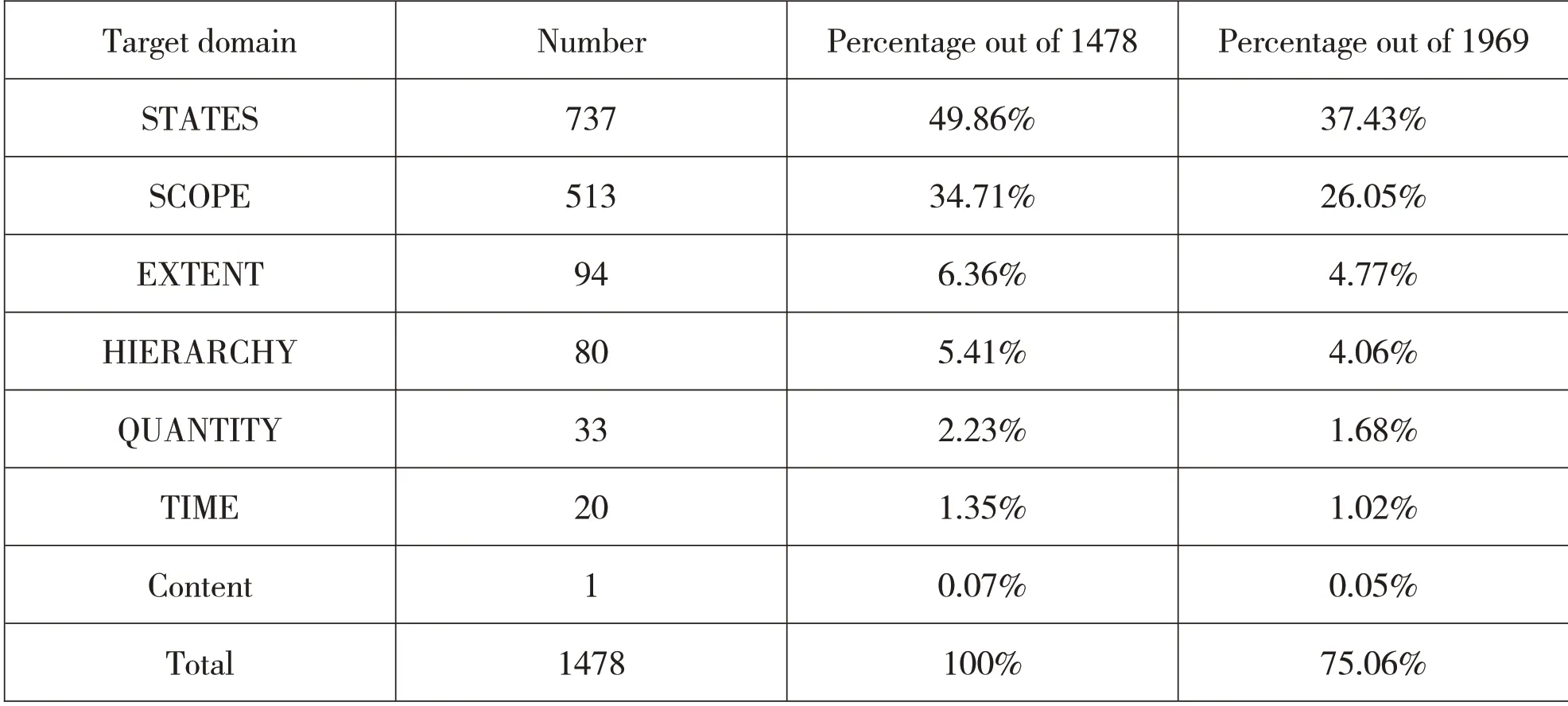
Table 1 The metaphorical extensions of shang
xia
Statistical results show that 2000 randomly selected sentences of xia are put into analysis in terms of metaphorical extensions.10 out of 2000 occurrences are excluded because of ambiguity.xia has three kinds of prototype:the static xia,the contact xia,and the dynamic xia,which is similar to shang.It is shown that among 1990 sentences of xia,only 30 are initiations of contact xia,652 are instances of static xia.They together take up 34.27% of the total.The rest 1308 occurrences are instances of the dynamic xia,which occupies 65.73% of the total.These figures show that xia is not balanced between its non-dynamic model and dynamic model,which is similar with xia.In sum,both xia and shang are more often used to signify a dynamic trajectory than a static location.As with shang,the vast majority of the 1990 sentences of xia own the metaphorical meaning(1614,81.11%).
The same six target domains found in shang,namely“TIME”,“QUANTITY”,“HIERARCHY”,‘STATES”,“SCOPE”,“EXTENT”and“CONTENT”are found in xia as well.
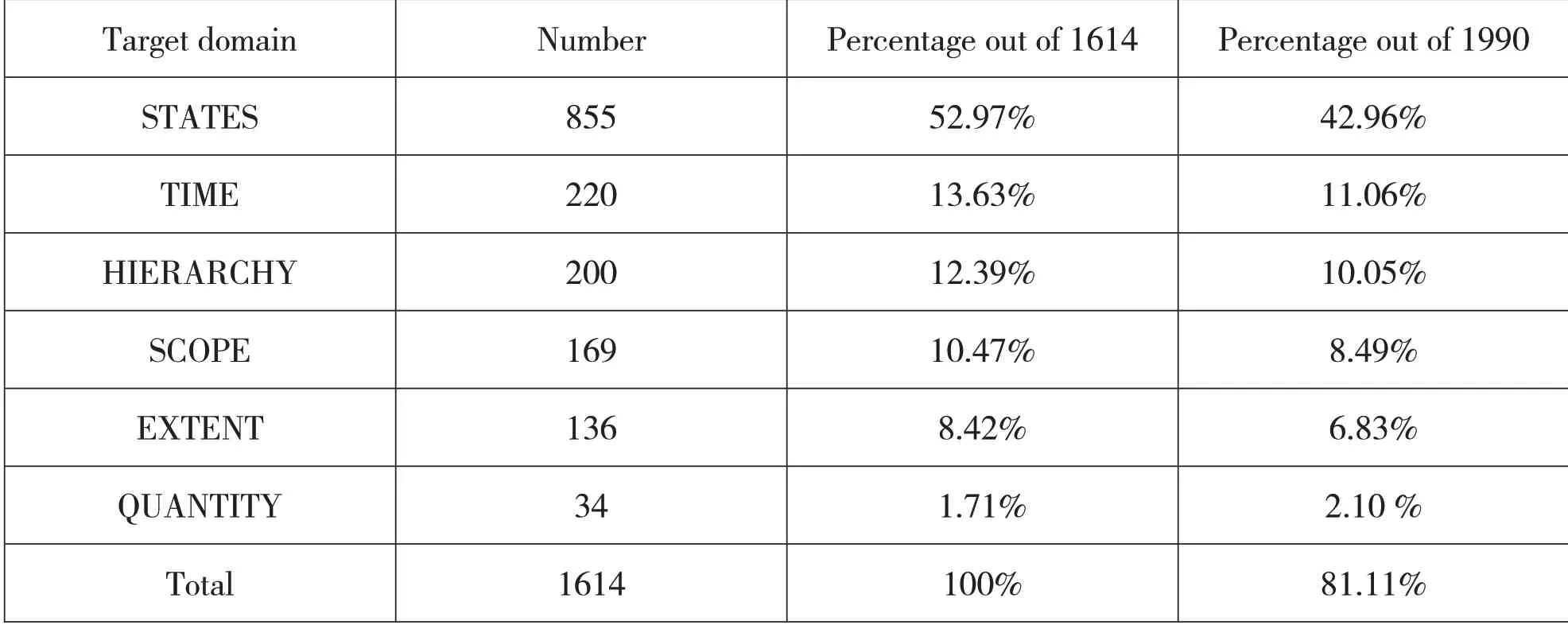
Table 2 The metaphorical extensions of xia
up
2000 sentences are randomly selected from 400 million English corpus and these records are analyzed one by one along its original model and metaphorical extensions.And only 4 out of 2000 sentences are excluded because of faulty wording.
Out of the1996 sentences of up analyzed,1865 are found to be metaphorical,which is about 93.44%of the total.And only 131 instances are found to be expressions without metaphorical meaning.
In both English and Chinese,the metaphorical extension“STATES”enjoys the first ranking in terms of raw frequency among all the metaphorical extensions detected.It is especially remarkable in English,where the percentage is as much as 65.18%out of all the data and 69.76%out of the data with metaphorical extensions.In Chinese,its preponderance is less evident,with a percentage of 37.43%out of all the data and 49.86%out of the data with metaphorical extensions.
as observed with shang and up,there is a high degree of parallelism in terms of the occurrence of metaphorical extensions.The same seven target domains with the same general metaphorical extensions are found in both cases.
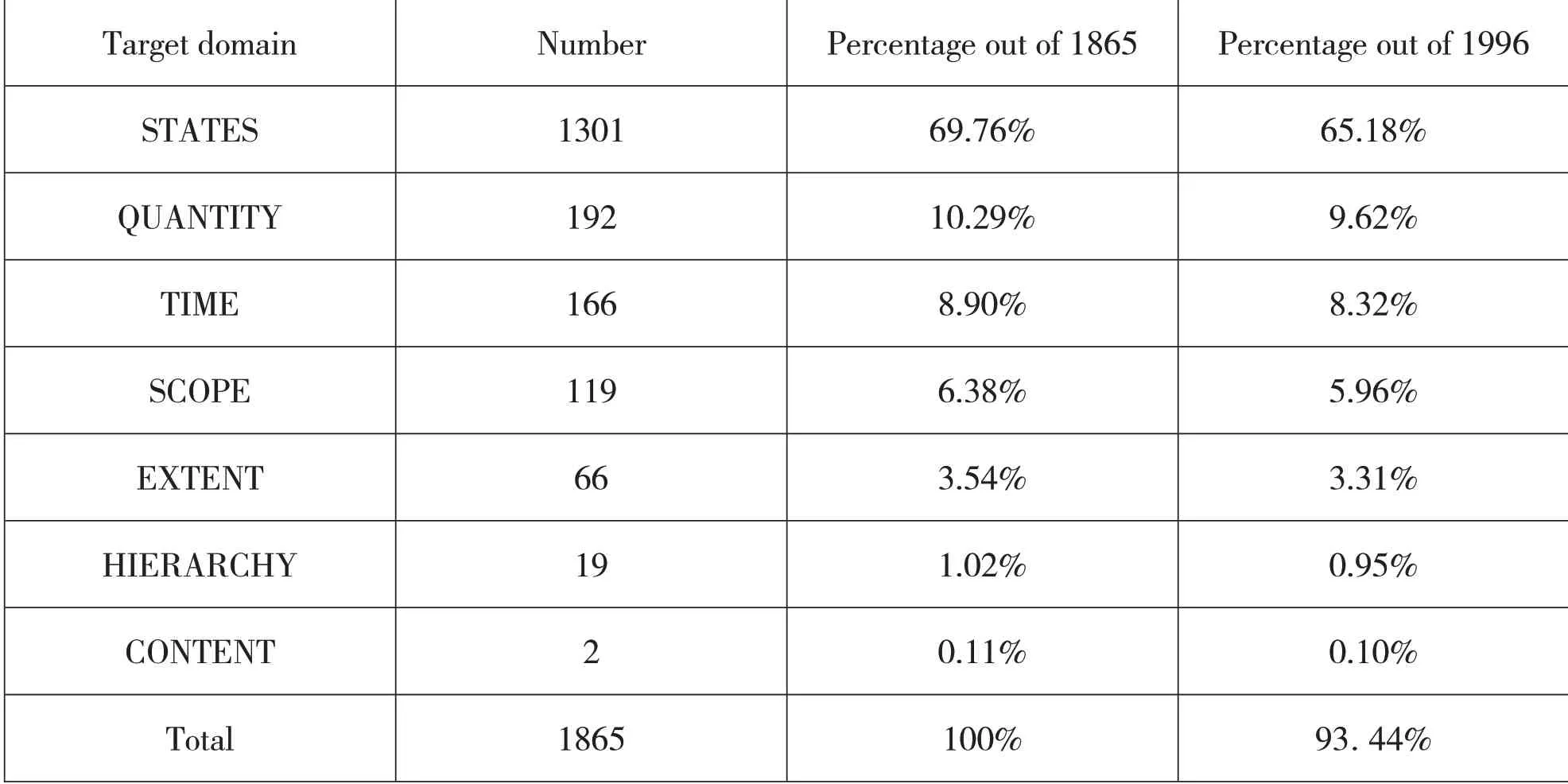
Table 3 The metaphorical extensions of up
down
2000 records of down are randomly selected from the 4 million word English corpus.After 11 cases lacking sufficient contexts for analysis have been excluded,1989 instances are finally put into thorough analysis.As in the case of shang,xia and up,the dynamic model of down appears to be dominant over the static model of down.Among the 1989 sentences analyzed,only 218 instances are found to be static,which is 10.96%of the total.
Among 1989 sentences of down analyzed,1490 instances of down are found to be metaphorical,accounting for 74.91%of the total number.The rest 25.09%are found to be expressions without metaphorical extensions.
As with shang and up,seven target domains for down,namely“TIME”,“QUANTITY”,“HIERARCHY”,‘STATES”,“SCOPE”,“EXTENT”and“CONTENT”are also identified in down although they are not arranged in the same order of frequency.The sharpest contrast between up and down lies in the different frequencies for the domain of“TIME”.With up,8.32% of the data carries the metaphorical extension of“TIME”.Yet with down,only 1.71%of the data is found to carry the metaphorical extension of“TIME”.Something in common among the four spatial concepts reflects in the aspect that the metaphorical extension“STATES”in the four orientational prepositions all enjoy the highest frequency among the seven extensions detected.That is to say,the four concepts are all mainly used to structure the target domain“STATES”,which is highly consistent with the findings from Lan(2003).
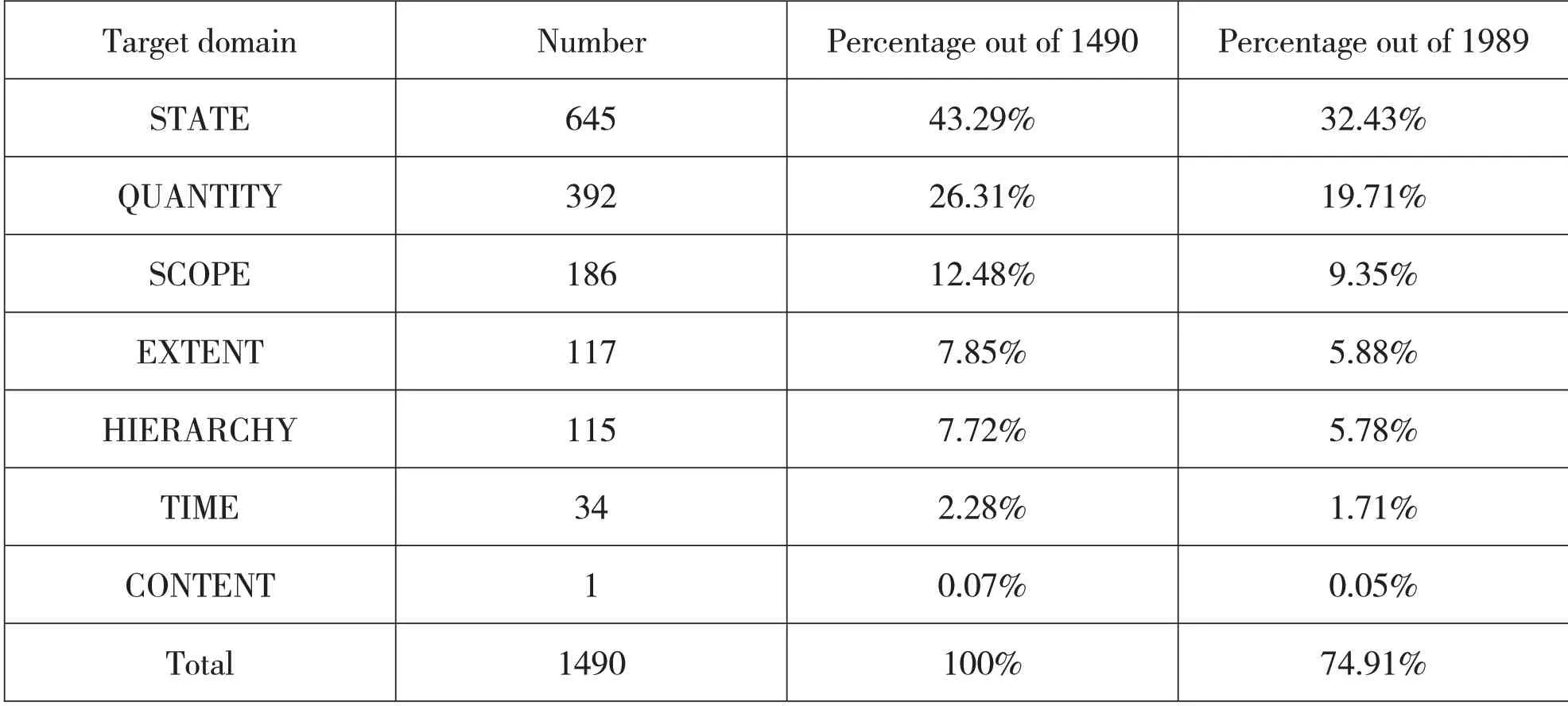
Table 4 The metaphorical extensions of down
Metaphorical Extensions
STATE:
(1)嗯,应该天天儿,应该向上吧,是啊,嗯,不学习就不行。
(2)学习的时间短点儿啊,成绩反正那时候儿都普遍下降吧。
(3)All across the country this morning,people are waking up who are striving for position as Republicans.
(4)It does when they're nervous,it gets them down.
QUANTITY:
(5)因为工业品的增长跟农业产品的增长同时上来,所以现在这是一不正常现象。
(6)今儿睡好觉了,这血压就低下来了。
(7)these kinds of positive campaigns have driven the approval proportion of the members up.
(8)The thing that's in turmoil is that other kinds of crime are going down.
STATUS:
(9)你呢,就说这上头呢,有好些个些事儿要解决,都得上底下去调查。
(10)你国家的希望,寄托在这下一代人上呢。
(11)the white and black,who’s down and who’s up.
(12)It’s not good for the message that comes down from the top.
The most striking difference between Chinese and English lies in the metaphorical extension“TIME”.In Chinese,“TOWARDS AN EARLIER TIME IS SHANG”is completely consistent with“TOWARDS A LATER TIME IS XIA”.While in English,“up”is used to denote the future time.
(13)I immediately became their publicist and one of their closest friends right up until their death in 1999.
at the same time,“down”can be used to signify both the past time and the future time.
(14)They are going to take him on a trip down Memory Lane to one of their interviews.
(15)Cameron has surpassed Blair in heading down the fourth year.
SCOPE:
(16)我们那时候儿就比较困难,经济上比较困难。
(17)一般困难都是在同志们和领导的帮助下,能够正确处理。
(18)Total tax rates at 100 percent up here.
(19)Anybody thinks that Ron Paul is going to somehow be a major factor down here.
EXTENT:
(20)实际上,我们这旗人,就算王孙公子吧.
(21)他几个月的时候,一天能吃很多瓶奶,三个小时吃一次,一下儿吃六瓶.
(22)Shake them out like this just to sort of limber up.
(23)Still,enthusiasm seems to be down.
DISCUSSION
The evidence in corpus suggests that there is a correspondence between“shang/xia”and“up/down”in terms of metaphorical extensions.The most remarkable discrepancy between Lan’s study and this study lies in the metaphorical extension of“TIME”.In this paper,“down”can be used to denote both the future and the past.As Lan(2003,p.165)claims that“the contradiction noted with TIME in English arises as a result of the conflict between the two cultural values:‘the future will be better’and‘the past was better’.”
as the statistical data shows that there is a tendency that the metaphorical extensions detected for shang and up are always used to conceptualize good things,but there is the exception like“下中农”(low-middle peasant).The social status of“下中农”is actually much higher than that of“上中农”(upper-middle peasant),which is characteristic of special background and historical period in China.
CONCLUSION
In summary,there is a highly consistency between shang/xia on one hand,and up/down in terms of the metaphorical extensions.The findings of this study is similar to that of Yu(1998),Lan(1999,2003)and Xiao(2008),thereby verifying that the universality of conceptual metaphors exist between Chinese and English.As we have repeatedly indicated that the agreement between the metaphorical extensions detected for the four concepts adds strength to the hypothesis proposed by Lakoff(1993,p.247),Yu(1998,p.17)that common features of metaphorical expressions exist between different languages.Relevant studies point out that exploring and comparing the similarities and differences in terms of cognitive system under different cultural backgrounds can both provide evidence for linguistic study and reflect the values of linguistic investigation(Lakoff,1980,1993; Zhao,2009; Sun,2010).My study here can by no means be comprehensive and it is of course very limited in terms of its breadth and depth.Therefore,we should carry out larger-scale cross-linguistic and cross-cultural comparative studies if we want to validate the hypothesis truly and thoroughly.Anyway,the empirical study presented herein has made a small step on a long journey of cross-linguistic and cross-cultural investigation into the universality of conceptual metaphor.
Acknowledgments
I am grateful to the Social Science Fund Project of Jilin Province“A Comparative Study of English and Chinese Spatial Metaphors Based on the Hypothesis of Cultural Relevance of Metaphor”(2019c108)for funding this research.
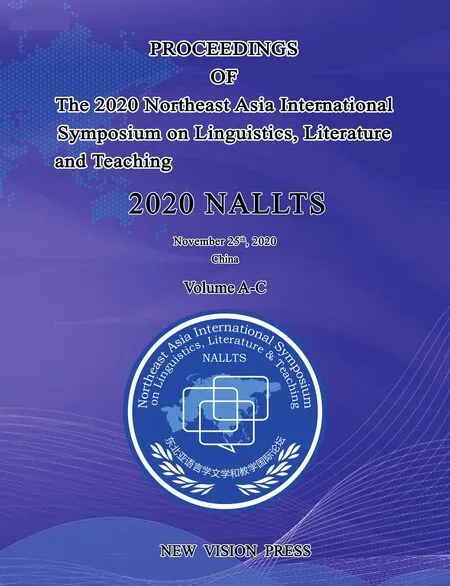 Proceedings of Northeast Asia International Symposium on Linguistics,Literature and Teaching2020年0期
Proceedings of Northeast Asia International Symposium on Linguistics,Literature and Teaching2020年0期
- Proceedings of Northeast Asia International Symposium on Linguistics,Literature and Teaching的其它文章
- Exploration of the SPOC-based Blended Teaching Model:Case Study of Business English Course
- Reducing Students’Foreign Language Speaking Anxiety Through Drama Performance
- An Action Research on Blended Learning through News Broadcasts in EFL Listening Context
- Growth Mindset in Teaching
- A Study on Corpus Stylistics Assisted English and American Literature Teaching
- Promoting Architectural Values in Culturebound Scenery in Tourist Destinations
